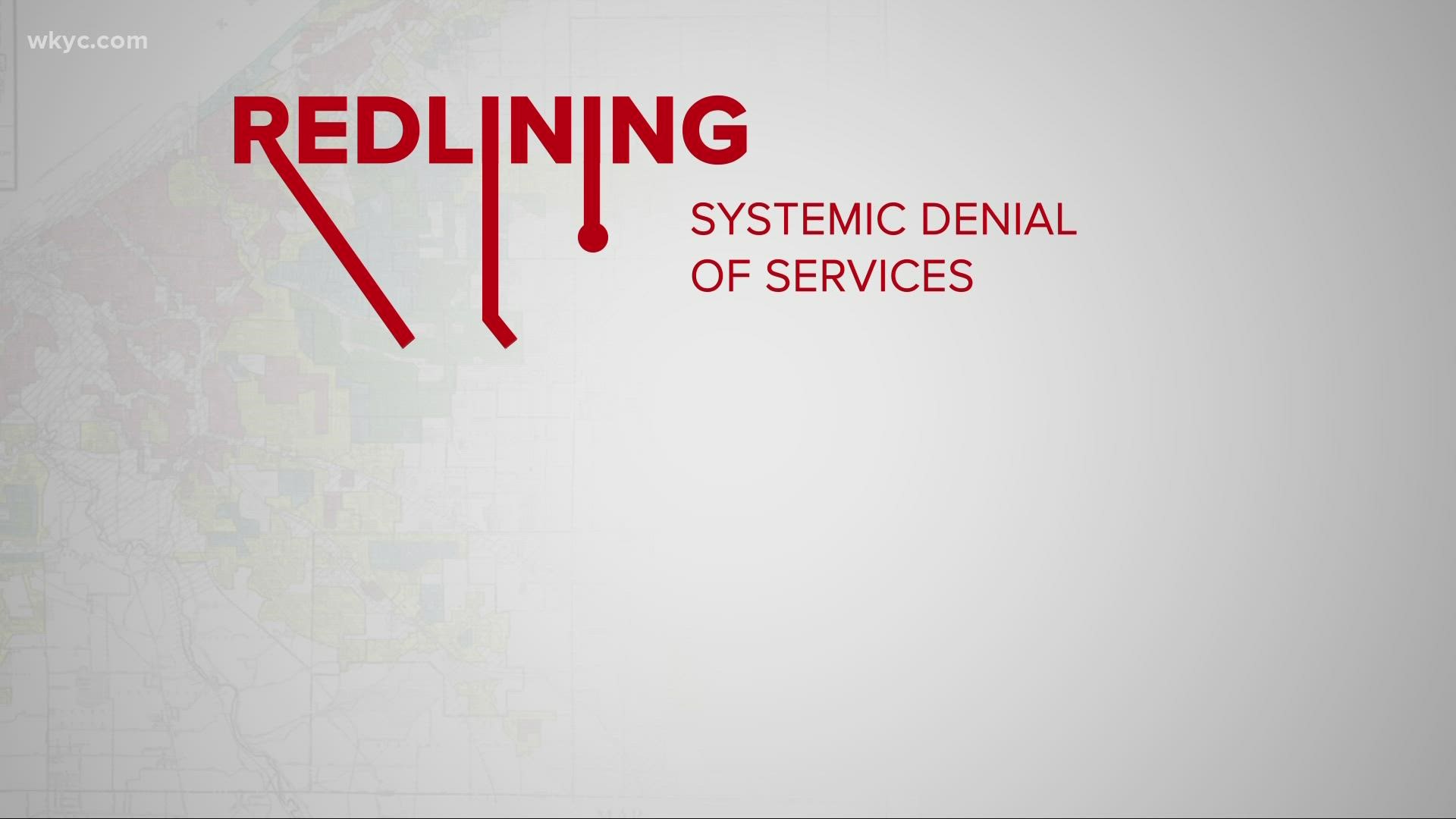CLEVELAND — A policy put in place generations ago still has lasting impacts on the social and economic well-being of Blacks to this day.
According to a University of California at Berkeley study, Cleveland is the sixth-most-segregated major city in the country, with most people of color living in east side neighborhoods facing extreme disadvantages. Visit any number of Cleveland neighborhoods, and you'll see the remnants.
"It was Mount Pleasant," former Cuyahoga County Treasurer and Land Bank Consultant Jim Rokakis remembered. "It was Superior-St. Clair, it was Glenville, it was the Kinsman neighborhood, Lee-Harvard."
Those neighborhoods have years of decay and blight as a result of a practice rooted in racism called redlining.
Redlining was a systemic denial of services that began in the 1930s, primarily affecting people of color with their neighborhoods shaded on maps. Gwen Donley, a predoctoral candidate at Case Western Reserve University, has studied these issues.
"Neighborhoods were outlined in red, meaning that they were the highest-risk," she explained. "Those neighborhoods were much more often predominantly African American."
"It prevented people of color from owning a home and gaining the wealth that they otherwise should have been able to gain just as their white counterparts did," Rokakis told us.
Redlining not only robbed Blacks of home ownership, but its lasting impact is felt in other areas — dangerous lead levels in homes, lack of reliable internet access, even health care disparities.
"So things like asthma, maternal death after birth, certain types of cancers are actually much higher in historically redlined neighborhoods," Donley said. "This is one of the most clearly intentional cases of discriminatory housing policy that we can see ever, and they saved in their notes, 'This neighborhood is mostly Black. Therefore, we are redlining it.'"
Fixing the problems redlining has created will not be easy, although progress is being made. Neighborhood development corporations are investing in affordable housing options as land banks work to tear down vacant properties.
"If you live on a street where there are four or five vacant houses and there's no chance of anybody coming back, the best solution — as brutal as it seems — is to remove that property and start over," Rokakis stated.
It's no easy task, but it's a necessary one, since experts say blight often spreads. The inner-ring suburbs are starting to see that, which is why raising awareness and eliminating discriminatory practices are so important.
"You can't keep saying, 'it's not my problem, it's their problem,'" Rokakis said. Donley agrees.
"Education is an important first step," she pointed out. "I would say for anybody who's working with public policy, our local council people or mayor, it's important for everybody to be aware of this."
Watch our full "Turning Point" special in the player below:

